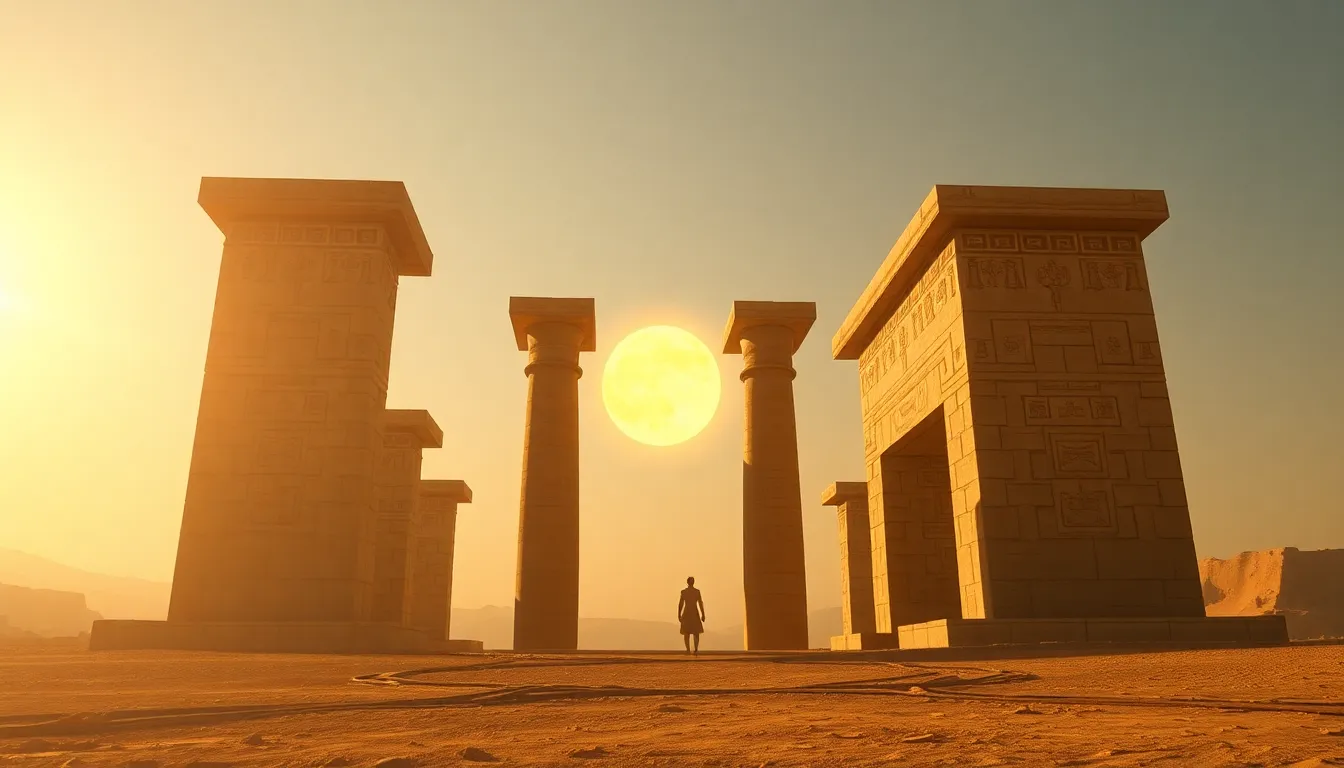The Myth of the Sun’s Journey Through the Twelve Hours
I. Introduction
The journey of the sun across the sky has captivated human imagination for millennia. In ancient Egyptian mythology, this celestial phenomenon was personified through the god Ra, who traversed the heavens, illuminating the world and providing life. The myth surrounding the sun’s journey reflects the profound connection between ancient civilizations and celestial bodies, underscoring the importance of understanding such myths in different cultures.
This article will explore the historical context of sun myths, delve into the twelve-hour concept, examine the scientific explanations of the sun’s movement, and discuss the symbolism and modern interpretations of these myths. By the end, readers will gain a deeper appreciation for the interplay between mythology and astronomy.
II. Historical Context of Sun Myths
Throughout history, civilizations have looked to the sun as a source of power, warmth, and life. Each culture has crafted its own narratives to explain the sun’s journey across the sky:
- Ancient Egypt: The sun was embodied by Ra, who sailed across the sky in his solar barque.
- Mesopotamia: The sun god Shamash was revered as a deity of justice, illuminating the paths of the righteous.
- Inca Civilization: The sun god Inti was central to their agricultural practices and rituals.
The cultural significance of the sun in mythology and religion cannot be overstated. It has been worshipped as a divine entity, a symbol of life, and a harbinger of change. The worship of the sun is evident in various rituals and festivals celebrated across different cultures, marking the passage of time and the seasons.
When comparing sun myths across cultures, we see both unique interpretations and striking similarities, revealing a universal need to explain the celestial phenomena that govern human existence.
III. The Twelve-Hour Concept
The twelve-hour framework is a fascinating aspect of ancient timekeeping that reflects humanity’s attempt to understand the sun’s journey. This division of time is significant in various ways:
- Definition: The twelve-hour system divides the day into two segments of twelve hours each, corresponding to the sun’s apparent movement across the sky.
- Origins: The concept of the twelve-hour clock can be traced back to ancient Egyptian sundials and water clocks (clepsydra), which marked time based on the sun’s position.
- Impact: This timekeeping method influenced daily life, agricultural practices, and religious rituals in ancient cultures.
IV. Scientific Explanation of the Sun’s Movement
While myths provide rich narratives, scientific understanding offers clarity about the sun’s actual trajectory:
- Overview: The sun appears to move across the sky due to the rotation of the Earth on its axis, creating the illusion of the sun rising in the east and setting in the west.
- Solar Noon: This is the moment when the sun is at its highest point in the sky, marking the transition between morning and afternoon.
- Myth vs. Reality: Myths often personify celestial movements, while astronomy explains them through natural laws, revealing the distinction between belief and scientific fact.
V. Symbolism and Allegory in Sun Myths
The sun’s journey is rich in symbolism and allegory, representing various themes that resonate deeply within human culture:
- Symbolic Meanings: The sun often symbolizes life, warmth, and growth, but it can also represent destruction and rebirth.
- Allegorical Interpretations: In literature and art, the sun’s ascent and descent are frequently used to depict the cycle of life, the passage of time, and the struggle between light and darkness.
- Life, Death, and Rebirth: Many cultures view the sun as a metaphor for the cycle of existence—birth at dawn, death at dusk, and rebirth with each sunrise.
VI. Modern Interpretations and Misconceptions
Despite advancements in scientific understanding, sun myths continue to hold sway in contemporary culture:
- Persistence of Myths: Many modern practices and beliefs still reflect ancient sun worship, such as celebrating solstices and equinoxes.
- Common Misconceptions: Misunderstandings about the sun’s movements persist, including ideas about the sun revolving around the Earth.
- Influence on Practices: Myths influence various solar practices, including astrology, which still holds significance for many today.
VII. The Role of Astronomy in Debunking Myths
Advancements in astronomy have played a vital role in reshaping our understanding of celestial phenomena:
- Advancements in Science: Discoveries in astrophysics and astronomy have clarified the mechanics behind the sun’s movement, debunking many ancient myths.
- Educational Initiatives: Programs aimed at promoting awareness of celestial mechanics help bridge the gap between myth and reality.
- Critical Thinking: Encouraging critical thinking helps individuals discern between mythological narratives and scientific facts, fostering a deeper understanding of the universe.
VIII. Conclusion
In summary, the myth of the sun’s journey through the twelve hours is a reflection of humanity’s quest for understanding the natural world. From the historical context and cultural significance to the scientific explanations and modern interpretations, the interplay between mythology and astronomy remains a captivating subject.
As we reflect on the enduring nature of myths, it is essential to recognize their relevance in our lives today. They not only shape our cultural narratives but also inspire us to explore the mysteries of the cosmos. Readers are encouraged to delve deeper into celestial phenomena and their cultural significance, enriching their understanding of both the universe and the myths that have shaped human history.




